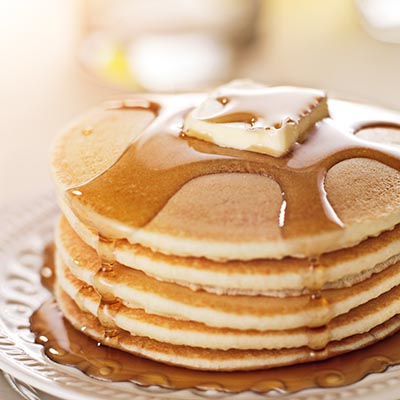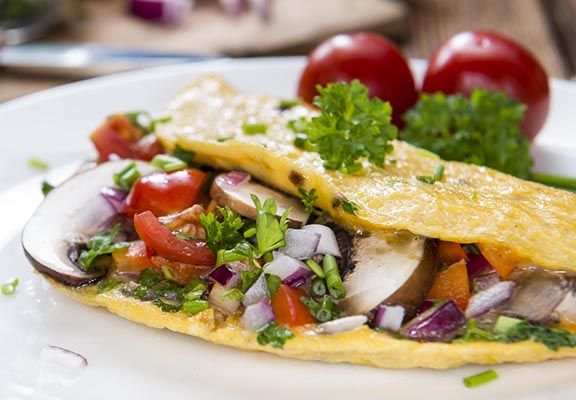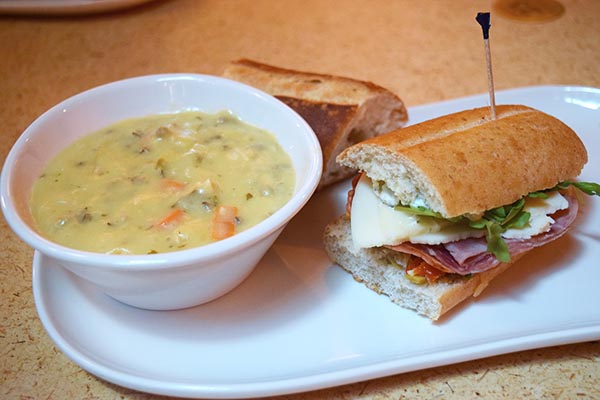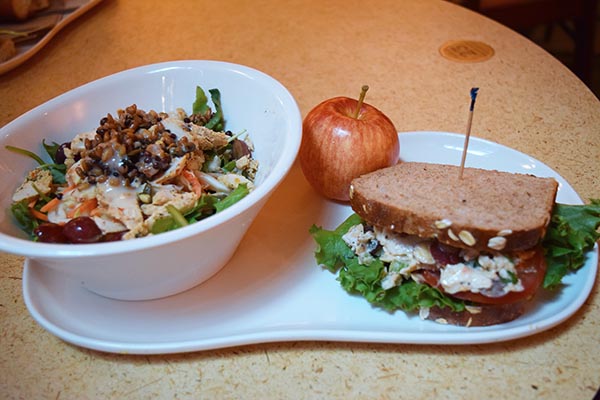Healthy menu hacks: what to order when you eat out
Soup or salad? Pancakes or omelet? Here's what to consider when you eat out. Our examples are from chain restaurants, but the winners and losers should hold up elsewhere.
Which milk in your latte?
LOSER: Whole or coconut milk
Getting your Starbucks grande (16 oz.) latte with whole milk means 230 calories and 7 grams of saturated fat. Coconut milk has only 140 calories, but 8 grams of sat fat and just 1 gram of protein.
WINNER: Nonfat milk, soy milk, or almond milk

A Starbucks grande latte with nonfat milk clocks in at 130 calories and no sat fat, and about the same protein (13 grams) and calcium as whole milk. Don’t like nonfat? Ask for 1% (or half nonfat and half 2%) milk. Non-dairy milks have pros and cons. A Starbucks grande latte with soy milk (190 calories) has 10 grams of protein, but 4 teaspoons of added sugar. Get your latte with almond milk (100 calories), and you’re down to just 1 teaspoon of added sugar, but only 3 grams of protein. Panera’s almond milk is unsweetened, but a medium (16 oz.) almond milk latte at Dunkin’ Donuts will set you back 4 teaspoons of added sugar.
Tip: Skip the syrup. A Starbucks grande vanilla or mocha latte has 4 pumps of syrup. That’s about 4 teaspoons of added sugar. If you can’t live without syrup, ask for a single pump.
Pancakes or omelet?
LOSER: Pancakes

A stack of five IHOP Original Buttermilk Pancakes with butter brings 670 calories and a pile of white flour to your table. With a quarter cup of syrup, you’re looking at 890 calories and about a day’s added sugar. The Harvest Grain ‘N Nut Pancakes may look better, but even if they’re 100% whole grain—IHOP won’t say—a buttered four-stack without syrup has 990 calories and about half a day’s added sugar.
WINNER: Omelet

Build your own. Fill it with veggies (not steak, bacon, ham, or ground beef), nix the cheese, and ask for one whole egg plus whites (or just whites). With a side of fruit, you’re talking roughly 300 calories, 30 grams of protein, and no white flour or added sugar. Not too shabby!
Soup, salad, sandwich?
Chains like Panera let “You Pick Two.” Which one should you skip: the soup, the half salad, or the half sandwich?
LOSER: Soup

Salt assault! At Panera, each cup of soup has more sodium (roughly 650 to 950 milligrams) than almost any half salad or many half sandwiches. And cream and butter means about a quarter of a day’s saturated fat (and 200 calories) in the Vegetarian Creamy Tomato and three-quarters of a day’s sat fat (and 370 calories) in the New England Clam Chowder. Exceptions: bean soups and chili. Panera’s Turkey Chili delivers a nice 10 grams of fiber and 11 grams of protein (from turkey, chickpeas, kidney beans, and edamame). Balance its sodium (810 mg) with half a Seasonal Greens Salad (75 mg).
WINNER: Salad & sandwich

Salads have the whole package: nutrient-rich veggies, healthy unsaturated fat (from the dressing), and more. The best salads are topped with nuts or seeds or avocado (not cheese) and whole grains (not fried wontons or croutons). Panera’s Ancient Grain & Arugula with Chicken, for example, adds apple-cabbage slaw, grapes, a sprinkle of farro and freekeh, and pumpkin seeds. Yum! For your half sandwich, look for one—like Panera’s Tuna Salad, Turkey, Napa Almond Chicken Salad, or Mediterranean Veggie—that’s mostly tuna, turkey, chicken, or hummus and veggies (not cheese, steak, bacon, or ham). Ask for the (partly) whole-grain bread.
Tip: Pick the apple, not the chips or bread, for your side.
NutritionAction.com doesn't accept any paid advertising or corporate or government funding. Any menu items recommended by NutritionAction.com have been vetted by our staff of nutritionists and are not advertisements by the manufacturers.
Continue reading this article with a NutritionAction subscription
Already a subscriber? Log in

